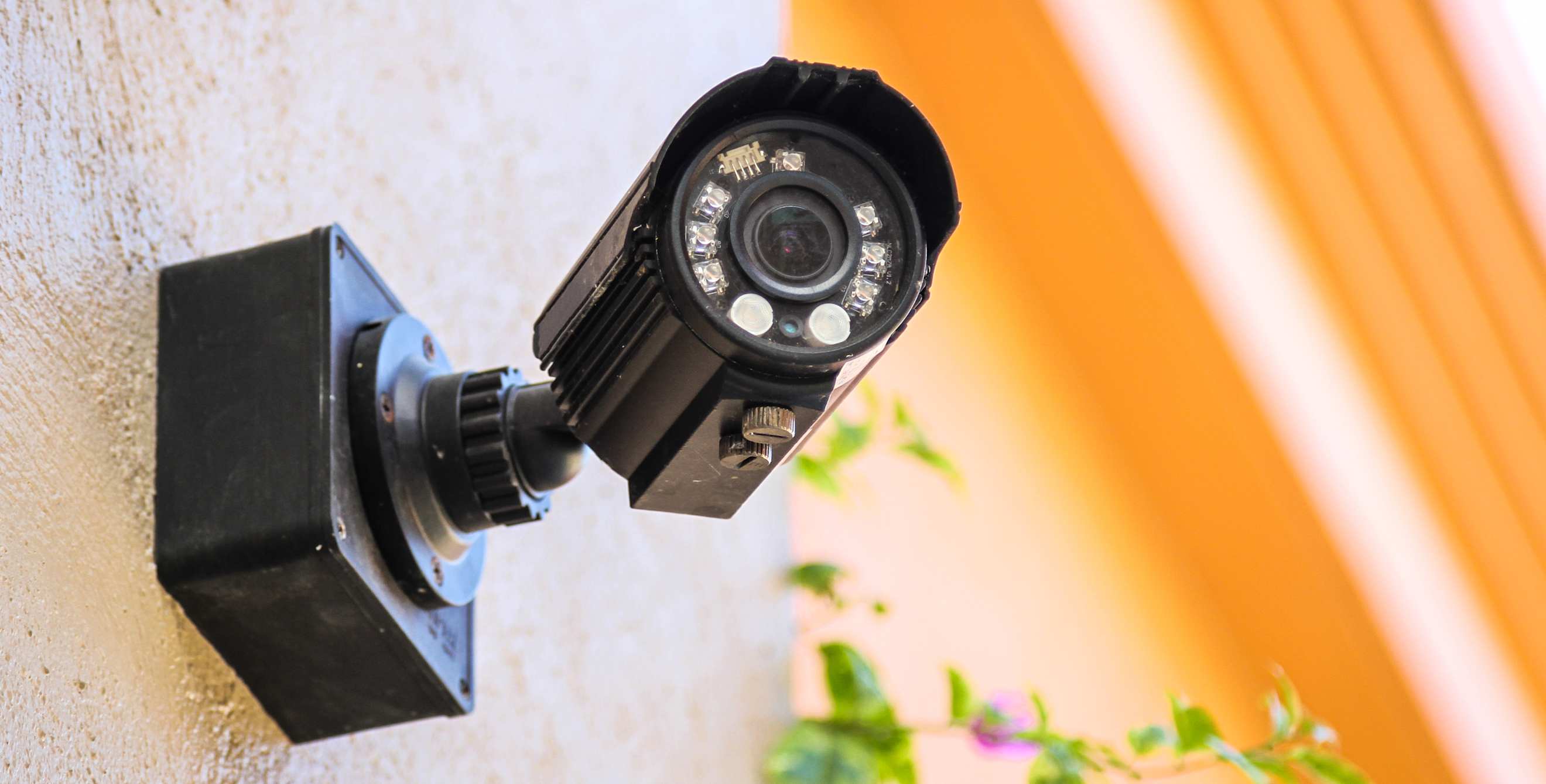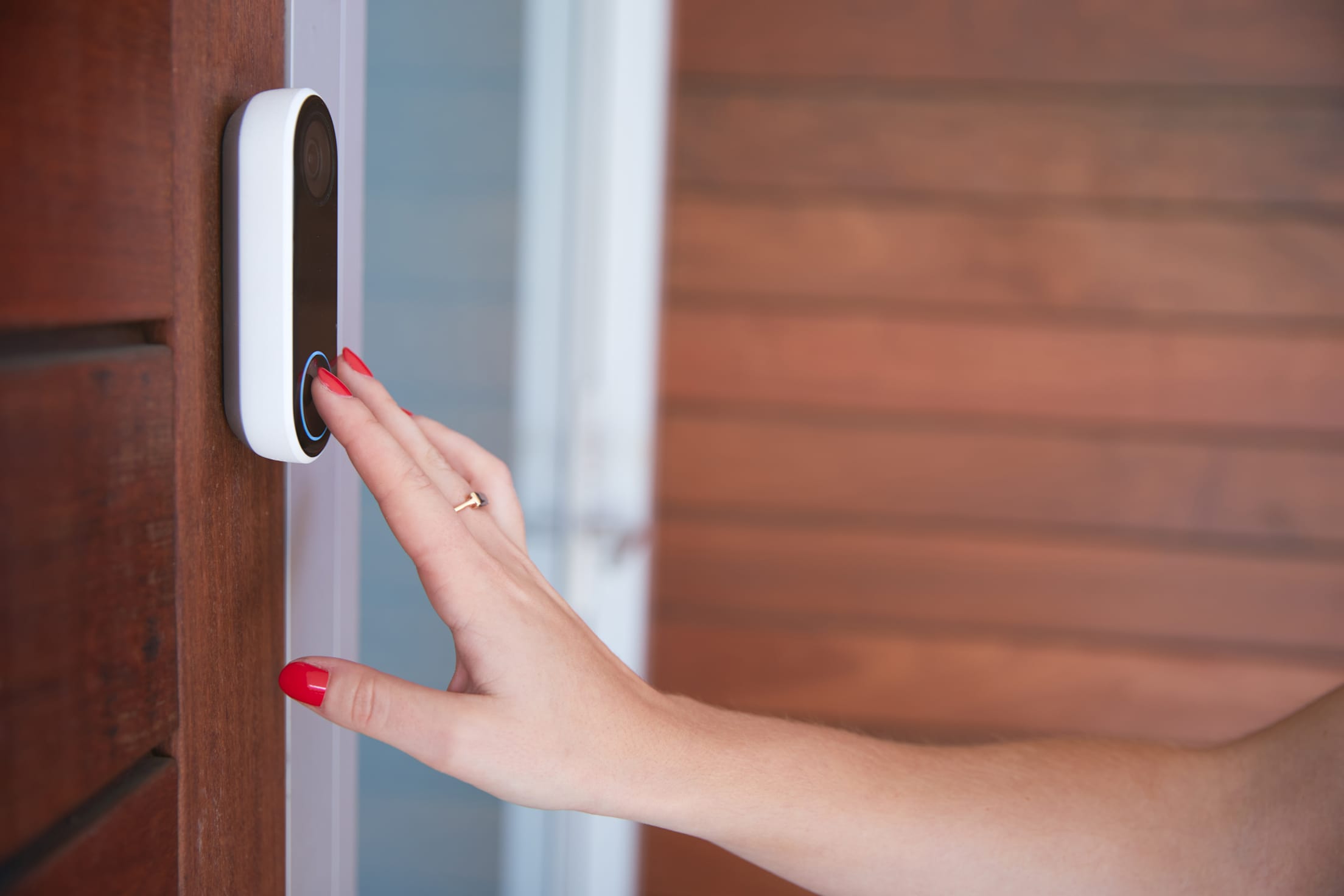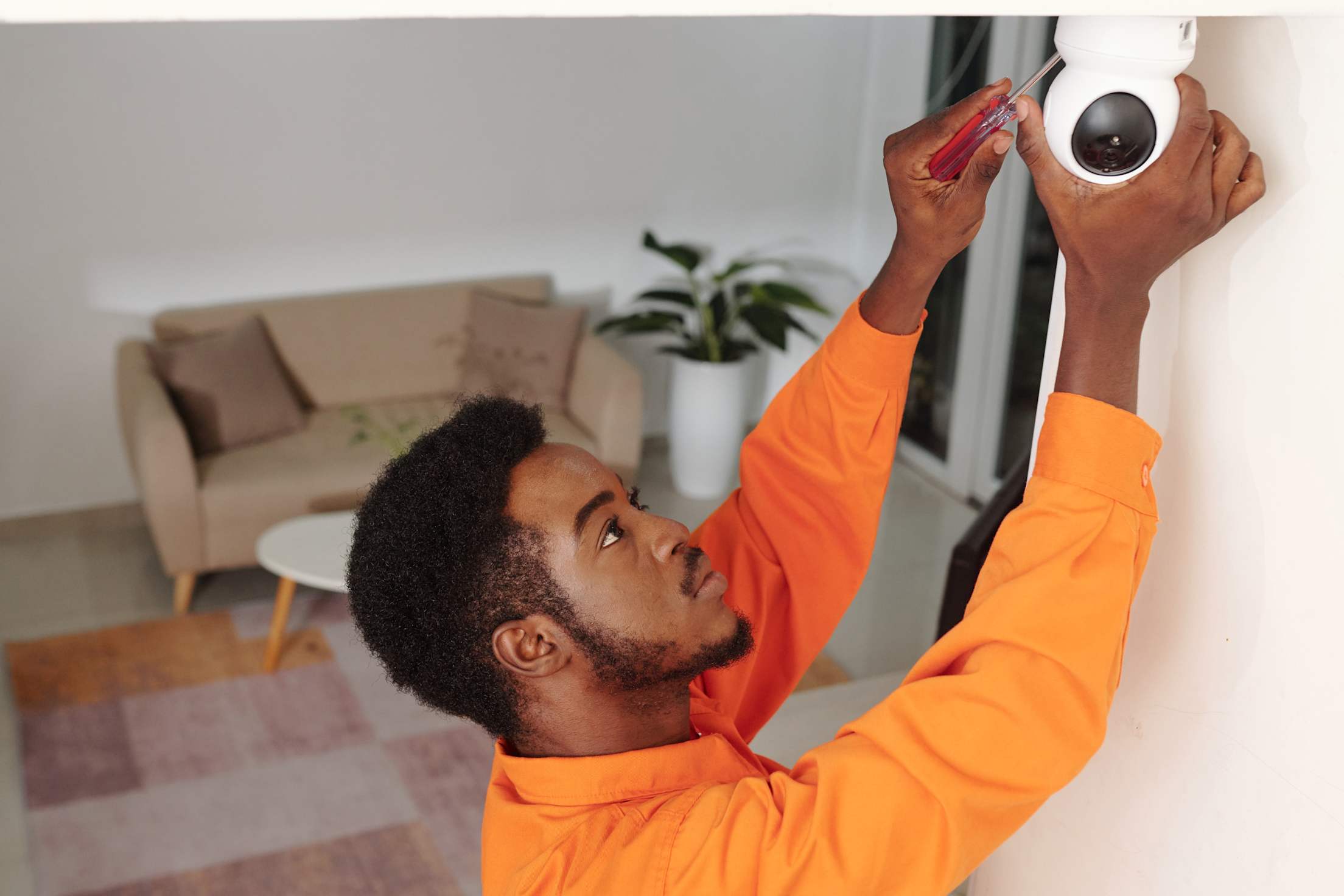
The Best Places to Install Home Security Cameras
Find out where to put indoor and outdoor cameras for the best results.

So you’ve decided to outfit your home with security cameras. How many do you need, and where do you install them? Should you monitor the interior of the house as well as the outside? And what about the legality of all this?
Home security cameras can introduce so many queries, it may be difficult to know exactly where to begin. To help answer some of these bigger questions, we spoke to numerous experts to guide you through the planning and installation process.
Outdoor Security Cameras
Experts agree that there’s no hard rule about how many cameras you should have outside, since every home and property is different. The key is to cover every realistic entry point to the home, both doors and windows, as well as anything you might need to keep an eye on, such as your car or RV parked in the driveway. For most homes, three or four outdoor cameras is usually sufficient without being cost-prohibitive.
One type of camera deserves special mention. “Doorbell cameras can be a big asset,” says Shane Hughes, smart home operations manager for AAA Smart Home Security, Northern California, who notes that these are the most popular cameras he is currently installing. “With all the packages being delivered and the ability to have two-way audio so you don’t necessarily have to answer the door,” doorbell cameras can do double (or triple) duty, notes Hughes.
Traditional outdoor security cameras can also serve multiple functions. While almost every outdoor camera sold today includes an infrared night vision mode, cameras are increasingly available with powerful floodlights built in, which can be set to shine when motion is detected. The camera itself won’t be visible at night (and thus not a deterrent), but a sudden blinding light may be enough to send a potential intruder running—while giving you a clearer look at what’s happening.

Where to Install Them
Regardless of the number of cameras, the rule of thumb is to place them no higher than 12 feet off the ground, says Glen Bhimani, CEO of BPS Security. “Any higher and you will miss important details and only capture the top of people’s heads,” he says. Another major placement consideration is how you will provide power to the camera. Battery-powered cameras need to be removed periodically and recharged, so you’ll need to place them somewhere within relatively easy reach. Cameras powered by a standard electrical connection require access to power, which may require drilling a hole in the wall to run a cable to an inside outlet, or a call to an electrician.
Indoor Security Cameras
When it comes to surveilling the inside of the house, the first question to ask is whether you want indoor cameras at all. Hughes notes that some users are uninterested in having a camera inside due to privacy concerns. However, some people use them as an additional security measure or to check in on family members or pets.
“Outdoor cameras can’t cover every single point of the house,” says Hughes, “so if someone makes it inside, they will get picked up by an indoor camera” or other security measures, such as motion sensors. Hughes adds that most indoor cameras he installs are being used for keeping an eye on infirm relatives, children, or pets. “I always joke with people that the most typical use I see for them is people that want to talk to their dogs throughout the day,” he says.

Where to Put Them
If you choose to install indoor cameras, focus on the areas where an intruder is most likely to traverse. “Start by taking a walk around your home and finding bright spaces that are not in direct sunlight; for example, a bookcase, on top of a refrigerator, or even at the top of a staircase looking down,” says Julie Zhu, Product Manager for Google’s Nest camera division. “From there, position the camera in a corner or an area where it can’t be easily knocked down or destroyed, and make sure it is within Wi-Fi range to ensure good connectivity.”
Recording Considerations
While it’s generally legal to record anything that happens within your property line, caveats abound. Some neighborhoods may have HOA restrictions that may limit camera placement, Zhu says, or they may limit the use of certain features, such as facial recognition. What you specifically can’t record is anything that happens in your neighbor’s yard, so you need to pay careful attention to how you aim outdoor cameras when they’re initially installed. The rules for recording audio also vary considerably from one region to another, so check your HOA guidelines and city, county, and state laws before recording.
Hughes offers one workaround. If a camera captures a small portion of a neighboring property, you may be able to set it to ignore motion that happens within that section of the image. “You basically draw a map of where your property ends so that the camera won’t start recording unless motion crosses that barrier,” he says.
While you own any video that is legally captured, many experts note that sharing video with others can often lead to headaches. Neighbors may see a video posted on YouTube as a privacy invasion, and, notes veteran police officer Chris Marciano, if you’re posting video of a criminal act, it could possibly impede an investigation. If you think you’ve captured a serious crime on camera, check with your law enforcement agency before sharing it publicly, he suggests.